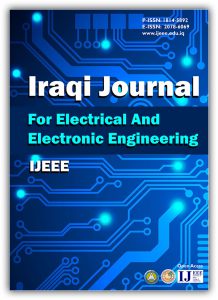
June 2009
<Previous Issue Next Issue>
| Power Transformer Protection by Using Fuzzy Logic |
| Ahmed Abdulkader Aziz, Abduladhem Abdulkareem Ali, Abbas H. Abbas |
| Pages: 1-11 |
| FULL TEXT (PDF) |
| Abstract: |
|
Power transformer protective relay should block the tripping during magnetizing inrush and rapidly operate the tripping during internal faults. Recently, the frequency environment of power system has been made more complicated and the quantity of 2nd frequency component in inrush state has been decreased because of the improvement of core steel. And then, traditional approaches will likely be maloperated in the case of magnetizing inrush with low second harmonic component and internal faults with high second harmonic component. This paper proposes a new relaying algorithm to enhance the fault detection sensitivities of conventional techniques by using a fuzzy logic approach. The proposed fuzzy-based relaying algorithm consists of flux-differential current derivative curve, harmonic restraint, and percentage differential characteristic curve. The proposed relaying was tested with MATLAB simulation software and showed a fast and accurate trip operation. |
| A Simplified Practical Procedure for Evaluation of System Performance for A Line of Sight Relay |
| Jassim M. Abdul-Jabbar |
| Pages: 12-27 |
| FULL TEXT (PDF) |
| Abstract: |
|
The aim of this paper is to design and evaluate hop calculations and system performance for line of sight (LOS) radio relay links utilizing a simplified proposed procedure. Such a procedure is simulated for the determination of both hop calculations and system performance. |
| Color Image Hiding In Cover Speech Signal By Using Multi-resolution Discrete Wavelet Transform |
| Samir J. AL- Muraab, Haider I. AL–Mayaly |
| Pages: 28-37 |
| FULL TEXT (PDF) |
| Abstract: |
|
Data hiding, a form of steganography, embeds data into digital media for the purpose of identification, annotation, security, and copyright. The goal of steganography is to avoid drawing suspicion to the transmission of a hidden message. Digital audio provides a suitable cover for high-throughput steganography. At 16 bits per sample and sampled at a rate of 44100 Hz, digital audio has the bit-rate to support large color image messages. In addition, audio is often transient and unpredictable, facilitating the hiding of messages. In this paper a high robustness system against the attackers in hiding of color images is presented. We used the multi-resolution discrete wavelet transform in hiding process. The JPEG format type for color images and WAV format for speech cover signal that used in test of system .Programs and graphics are executed by using MATLAB version 6.5 programs. |
| Dynamic Model of Linear Induction Motor Considering the End Effects |
| Haroutuon A. Hairik, Mohammed H. Hassan |
| Pages: 38-50 |
| FULL TEXT (PDF) |
| Abstract: |
|
In this paper the dynamic behavior of linear induction motor is described by a mathematical model taking into account the end effects and the core losses. The need for such a model rises due to the complexity of linear induction motors electromagnetic field theory. The end affects by introducing speed dependent scale factor to the magnetizing inductance and series resistance in the d-axis equivalent circuit. Simulation results are presented to show the validity of the model during both no-load and sudden load change intervals. This model can also be used directly in simulation researches for linear induction motor vector control drive systems. |
| Gray Scale Image Hiding Using Wavelet Packet Transform |
| Abbas A. Jasim |
| Pages: 51-59 |
| FULL TEXT (PDF) |
| Abstract: |
|
This work implying the design of hiding system that hides a gray scale image into another gray scale image using two-dimensional wavelet packet transform. The proposed hiding scheme uses Wavelet Packet Transform (WPT) to embed data elements of the secret image in different frequency bands of the cover image. The data elements of the secrete image are placed within DWT subspaces after simple treatment in order to reduce its significance on the resulting image and to increase security. The resulting image (the cover image within which the secret image is hidden) is called stego_image. Stego_image is closely related to the cover image and does not show any details of the secret image. |
| Online Genetic-Fuzzy Forward Controller for a Robot Arm |
| Abduladeem A. Ali, Amal J. Kudaer |
| Pages: 60-73 |
| FULL TEXT (PDF) |
| Abstract: |
|
The robot is a repeated task plant. The control of such a plant under parameter variations and load disturbances is one of the important problems. The aim of this work is to design Genetic-Fuzzy controller suitable for online applications to control single link rigid robot arm plant. The genetic-fuzzy online controller (forward controller) contains two parts, an identifier part and model reference controller part. The identification is based on forward identification technique. The proposed controller it tested in normal and load disturbance conditions. |
| Vector Quantization Techniques For Partial Encryption of Wavelet-based Compressed Digital Images |
| Hameed A. Younis, Turki Y. Abdalla, Abdulkareem Y. Abdalla |
| Pages: 74-89 |
| FULL TEXT (PDF) |
| Abstract: |
|
The use of image communication has increased in recent years. In this paper, new partial encryption schemes are used to encrypt only part of the compressed data. Only 6.25-25% of the original data is encrypted for four different images, resulting in a significant reduction in encryption and decryption time. In the compression step, an advanced clustering analysis technique (Fuzzy C-means (FCM)) is used. In the encryption step, the permutation cipher is used. The effect of number of different clusters is studied. The proposed partial encryption schemes are fast and secure, and do not reduce the compression performance of the underlying selected compression methods as shown in experimental results and conclusion. |